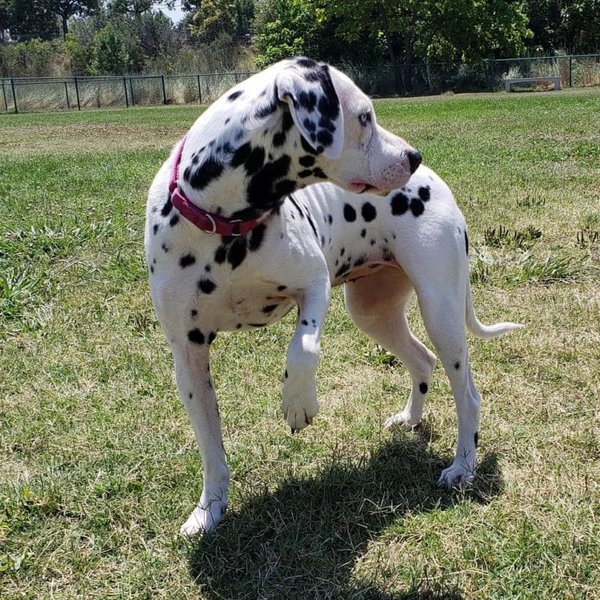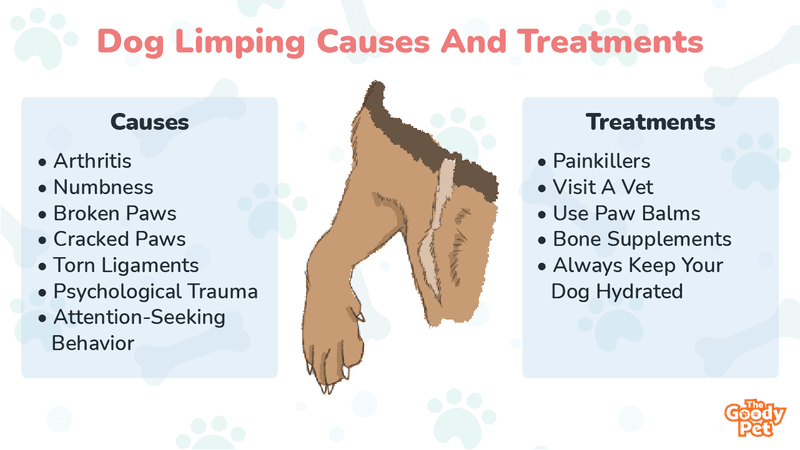If you are reading this then your dog is probably limping. You want answers on why this could be and most importantly, what you can do. Well, you have definitely come to the right place for all that and more.
Dogs can limp or appear to limp for a number of reasons including health issues that affect their muscles and joints. It could also be psychological issues that are causing the new limp or change in gait in your dog.
In the sections below, we shall answer all your questions on dog limping as a new symptom and everything you need to know about it. That way, you not only understand why it is happening but also what to do next.
Why Is My Dog Limping All Of A Sudden?
If your dog is suddenly limping or unable to walk, it is most likely due to a physical condition affecting their muscles, joints or both. It can also be psychological causes. Here is a brief summary of some of the most common causes of limping in dogs:
- Arthritis
- Cracked paws
- Broken paws
- Torn ligaments
- Numbness
- Attention-seeking behavior
- Psychological trauma
Understanding the possible reasons why your dog is limping is important when it comes to determining the best steps to take. This could be something as simple as using paw balms and supplements to more intense interventions like emergency veterinary visits.

Can Arthritis Cause A Dog To Limp?
Arthritis is one of the leading causes of new onset limping behavior in dogs. It is particularly common among older dogs.
By definition, arthritis refers to inflammation of tissues in the joint unit. This might be a bit of an understatement. In some cases, the inflammation is accompanied by extensive wear and tear of the joint surfaces due to years of the limbs being in use.
Interestingly, some dogs are more likely to develop arthritis than others. A commonly afflicted group are large dog breeds that are at risk of developing hip or elbow dysplasia. This joint anomaly almost always results in joint destruction, arthritis, and the limping gait in your dog.
While arthritis is predominantly an issue you will find with old dogs, it is also possible to get dogs as young as less than one year old. This is known as juvenile arthritis in dogs and should definitely be ruled out as a possible cause if your young pooch is limping.

Can Cracked Paw Pads Cause Limping?
Cracked paw pads in a dog can cause limping as a result of pain and irritation in the affected limbs. In a healthy and well groomed dog, the paws should be soft to touch and supple. This is often the case in outdoorsy dogs that spend most of their time on rough, gritty grounds.
Cracked paws are usually a sign that something is wrong with either what the dog is exposed to or the mechanisms within their bodies.
Cracked paw pads in dogs can occur for a number of reasons. These include things like existing infections that are more often than not fungal or bacterial. The microorganisms attacking the skin and paw pads could cause tissue damage and leave large, dry fissures as the dog heals.
Another possible cause of cracked paw pads is exposure to really unfriendly environments. This happens a lot when the dog has to walk on very hot or even extremely cold surfaces. It may therefore be a good idea to invest in dog shoes for those extremely cold or hot seasons.
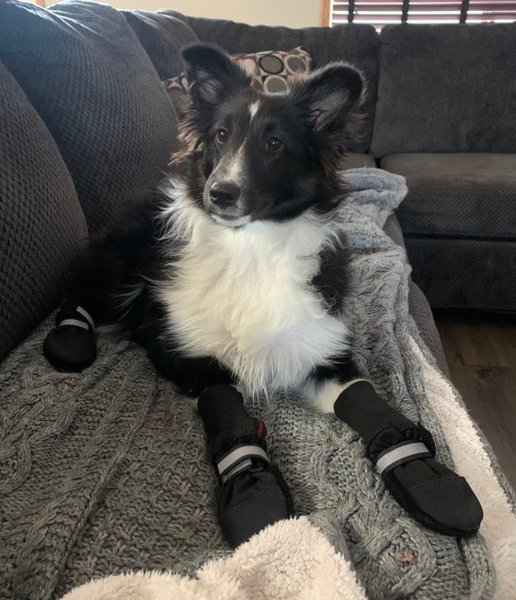
How Can You Tell If A Dog’s Paw Is Broken?
The best way to tell if your dog has a broken paw is through a veterinarian’s examination and an X-ray if it is needed. It is very important that this happens as fast as possible so that appropriate interventions are instituted before deforming complications set in permanently.
Broken paws and limb bones are fairly common in dogs and can cause both immense pain and immobility. They tend to happen accidentally whether your dog got their paw caught in a grill or they got accidentally run over playing in the street.
One thing that could cause you to suspect that your dog has a fractured paw is deformity. The paw or limb will bend in an unnatural angle in these cases. You may also notice that in addition to the limping, your dog’s fractured paw is swollen.
If you notice these signs or suspect a broken paw based on how the injury occurred, it is best to take your dog to the veterinarian as soon as possible.
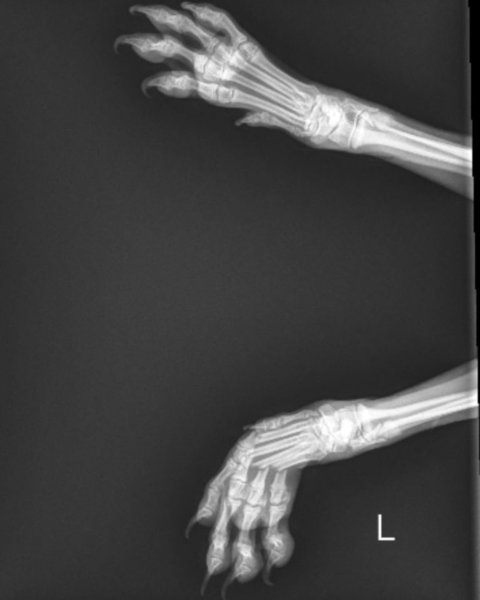
How Do I Know If My Dog Tore A Ligament?
As with fractured paw and other medical causes of limping in a dog, the best way to tell if your dog has a torn ligament is through veterinary examinations and imaging tests.
Compared to broken paws, arthritis, and cracked paw pads, torn ligaments occur very rarely. They are associated with activity trauma especially with very athletic and aggressive dog breeds like hunting dogs.
With torn ligaments in limping dogs, you have to seek urgent medical care as some of the injuries may require surgery. Your dog may also need to start on physiotherapy or use walking aides which is something you will need the vet’s advice on.

Why Is My Dog Limping After Sleeping?
If your dog starts limping usually in the morning or after naps, it could be that their leg or legs just went to sleep too.
The constant pressure on whatever leg they were putting their weight on could cause numbing and a sensation similar to pins and needles that you may have experienced.
A hallmark feature of dog limping due to simple numbness is that it will usually happen after your dog has put their body weight on the limb. After this, the limping will gradually disappear within a few minutes.
Your dog could also be limping after sleeping as a result of arthritis. This happens if their beds are not offering adequate support and cooling. Without these, your dog’s joints will be inflamed resulting in swelling that may last well into the day.

How Do You Tell If Your Dog Is Faking An Injury?
Sometimes, dogs limp for attention and it might be difficult to figure out when your pooch is faking an injury. The only way to know for sure that your dog is actually faking an injury is to have it confirmed by a veterinarian.
However, there are a few other signs that could tip you off. One of these is the obvious absence of other signs and symptoms. There may be no swelling, signs of local irritation like redness, and no other changes in mood and behavior.
You may also notice that your limping dog suddenly gets cured and back to normal when you play with them or give them any kind of attention.
To be frank, this behavior is more common in some dog breeds than others.
Sassy and needy small and toy dog breeds are the most commonly implicated. However, your gentle giant of a pooch might just be as capable of faking an injury and limping all over the place for some attention.
Faking of injuries could also happen if your dog experiences an uncomfortable change in circumstance. Maybe you moved to a new home. It could be that you are working more and giving them less attention. It could also be the introduction of a new pet into the home.
How Can I Treat My Dogs Limping At Home?
You may not always be able to treat your limping dog at home especially with serious injuries or conditions like arthritis. However, you may be able to relieve some of their pain.
So what can you give to and do for a dog with a limp? Here is a quick summary of some of what you can do:
- Give your dog bone and joint supplements.
- Pain control with painkillers.
- Add paw balms to your dog’s grooming routine.
- Keep the dog well hydrated.
- Pay the vet a visit.
Of all of these possible ways to treat your limping dog, the last one is the most important thing you could do for your pooch. A vet’s training and experience will put them in the best position to figure out what is wrong with your dog’s leg and what can be done for them for better results.
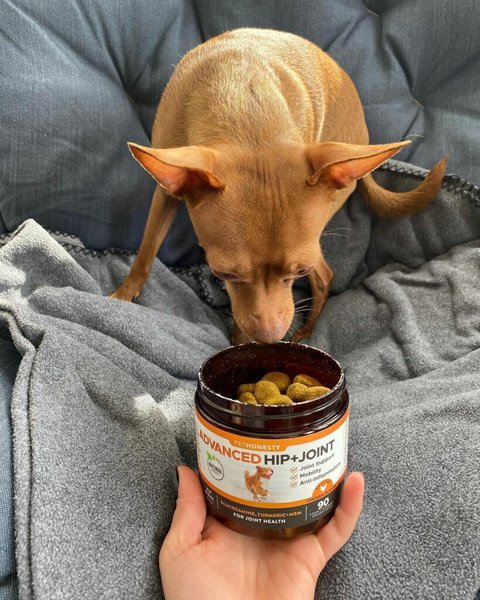
Can I Give My Dog Glucosamine For Arthritis?
The short answer is yes, you can give your dog Glucosamine to help with their arthritis.
Glucosamine has what are referred to as chondroprotective properties. This simply means that it can protect cartilaginous tissues when consumed by the dog. Some of the effects of glucosamine include:
- Reduced joint inflammation.
- Alleviation of joint pain.
- Promoting healing of joints and worn out bone surfaces.
- Preventing or delaying wear and tear of joint surfaces.
All these properties of Glucosamine are what makes it fantastic for dogs with arthritis. This will help promote healing while giving them some comfort and relief. Glucosamine can also come in handy for dog breeds that are at risk of developing arthritis in the future.
The good thing about Glucosamine for dogs with arthritis is that it is available in very convenient and easy-to-administer formulations. These include soft chew treats with supplements as well as glucosamine-enriched dog food.
Can I Give My Dog Ibuprofen For A Limp?
You can technically give Ibuprofen to a dog with a limp but this does not mean that it is a good idea to do so.
On one hand, Ibuprofen is a great pain killer especially if the limping is associated with inflammation. This is the case with causes like broken paws and arthritis. A painkiller like Ibuprofen would therefore be a fantastic way to put your dog out of their misery.
On the other hand, Ibuprofen can be toxic to dogs in the wrong dosages. Over-the-counter Ibuprofen for human beings in particular can be very dangerous.
The best thing to do with this intervention is to wait for your veterinarians’ direction. This will require a vet visit and a proper evaluation for the cause. With all this information, your vet will tell you the best brands and dosages of Ibuprofen to use for your dog.

Can I Give My Dog Aspirin For A Limp
As with any other medication including other painkillers, you can give your dog Aspirin for their limp but it is really best that you don’t do it. Without proper guidance on the right dosages and brands for a dog, you are likely to cause more harm than good.
If your dog’s vet finds Aspirin safe and ideal for use based on your dog’s condition, age, and other factors, then they will let you know what dose to give your dog. That way, you can avoid complications and generally worsening the situation for your pooch.

What Can I Put On My Dogs Cracked Paw?
When taking care of a dog with cracked paws, you can either go for market preparations or improvise with home remedies. Here is a summary of some of your options:
As far as market preparations go, your best bet is a paw pad healing balm. These are formulated to help ease the irritation while also promoting healing and restoration to the smooth and supple nature of healthy paw pads.
We recommend Bodhi Dog USDA Certified Organic Paw Balm For Dogs. It is certified organic and formulated using safe and natural ingredients that you don’t have to worry about your dog licking its paws after applying the balm.
Another prepared option you may have is an antifungal or an antibacterial ointment. These are useful in cases where the cracked paws responsible for the limping are as a result of infection. The ointments also help to prevent infection in the vulnerable dogs.
When it comes to home remedies, all you may have to do to offer your dog some relief is a gentle paw pad cleaning. Use lukewarm water with some salt to help ease the irritation while also helping to get rid of some of the germs around.
Finally, you should take care of your dog’s paws by preventing the cracking in the first place. Investing in doggy boots is a good strategy especially for outdoorsy dogs. You can also use paw pad balms in general as a part of your routine grooming steps.
How Long Does It Take For Cracked Paws To Heal?
It can take anywhere from a few days to as much as 3 weeks for cracked paws to heal on a dog. How long depends on a number of factors from the extent of injury and the cause of the cracking paws to how you take care of your dog.
If the cracks are deep and complicated by infections, it may take several weeks for them to heal. This is even worse if your dog is constantly exposed to contaminants that keep the cracked paw pads infected.
Dogs in their senior years may also take longer to heal when suffering from cracked paws. This includes very young puppies and very old dogs. In both cases, their healing mechanisms and immune responses may not be strong and fast enough to clear the cracked paws quickly.

Should I Take My Dog To The Vet If He Is Limping?
To be safe, it is best that you take your dog to the vet when they are limping. This applies even if you think your dog is just faking it. It is better to rule out serious causes of the issue instead of making potentially harmful assumptions.
If you can, try and take your dog to the vet as soon as possible after you notice they are limping or having other issues with walking normally. This will give the vet a chance to act quickly which improves the outcome for your dog whatever the cause is.
What the vet does for your dog in these cases will depend on what they find when they perform a physical examination and other tests including imaging. They may put your dog on prescription meds, advice lifestyle changes, or even move ahead with surgical interventions.
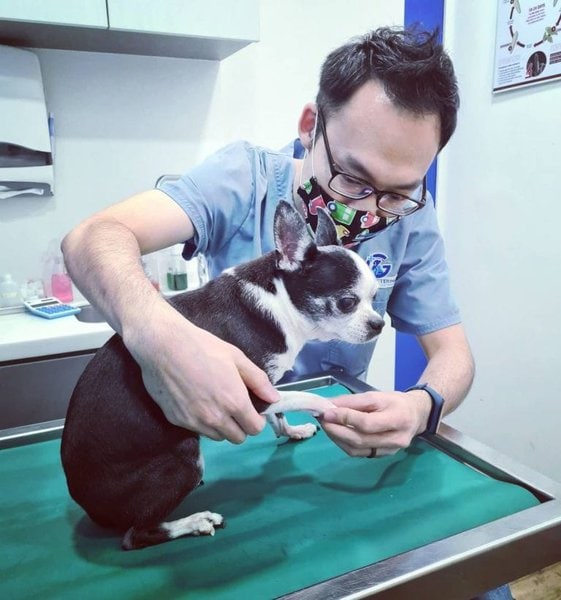
How Much Does It Cost To Fix A Dog’s Broken Paw?
If your dog has a broken paw, it may cost you anywhere between $200 and $1,000 to get treated. This price may even go higher in cases where the dog needs further health investments like medication, mobility aides, and others.
The amount you have to pay usually depends on the extent of the injuries and what needs to be done to treat the dog. It is also determined by other factors like the vet’s specific charging policies and skill level.
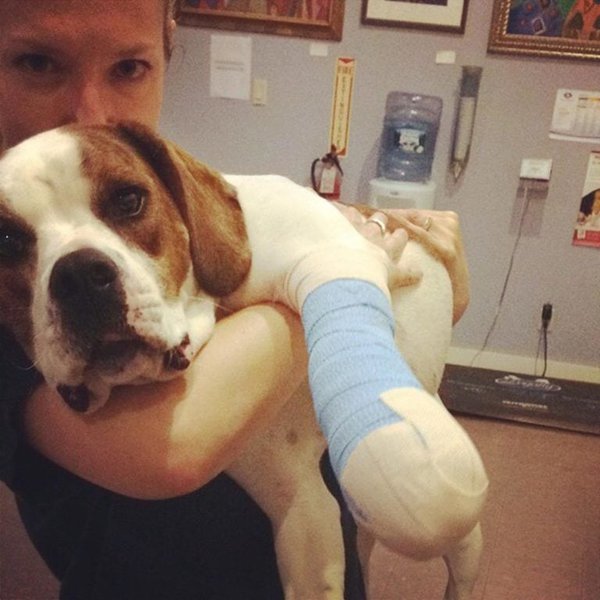
Can A Dog Limp Heal On Its Own?
It is absolutely possible for a dog’s limp to go away on its own.
This is usually the case with limping caused by issues like numbness after sleeping on the leg, muscle pulls, or even minor sprains.
You can also expect this spontaneous resolution with limping caused by psychological issues including a need for attention.
Limping that resolves on its own typically lasts a very short time. It takes a few minutes to a few days maximum. If your dog’s limping shows no signs of healing on its own, it is best to get your vet involved.
